Gluten free options in Japan
ShareAre there gluten free options in Japan?
Yes there are!
Japanese convenience stores, known as 'Konbini' or 'conbini' in Japanese, are the best! The main ones are Seven-Eleven, Lawson, Family Mart, MiniStop and NewsDay. Many are open 24 hours a day and can be found all over Japan. Grocery stores also have options. You can find food that is gluten-free in most of them. But how do I shop at a store where I don't speak the language? I'll go through everything you need to know below!
- How to pay at Japanese convenience stores?
- What foods are generally celiac safe?
- How to check the ingredients for gluten if I can't read Japanese?
- Gluten free meals from Japanese convenience store
- Gluten free meals from Japanese grocery store
And if you like this blog, be sure to check out my celiac guide to eating gluten-free in Japan as well! It includes important Kanji to recognize!
What about the food on the airplane? I got you covered, check out the blogs below
- My Gluten-Free Meals on ANA. Perfect for a Celiac
- My Gluten-Free (Gluten Intolerant) Meals on WestJet's International Economy Flight.
How to pay at Japanese convenience stores?
Below is an example of the payment machines you'll find at stores in Japan. You choose your type of payment on the touch screen, either cash, Pasmo card or sometimes credit card. Than either insert, swipe or tap your card. Or if using cash put in your bills in the bill area and coins in the coin area. You will get your change at the bottom if using cash and your receipt will print for you to take or put in the little receipt garbage area. Sometimes you can choose your language. I found the clerks at the stores were very helpful when I was unsure of what to do.
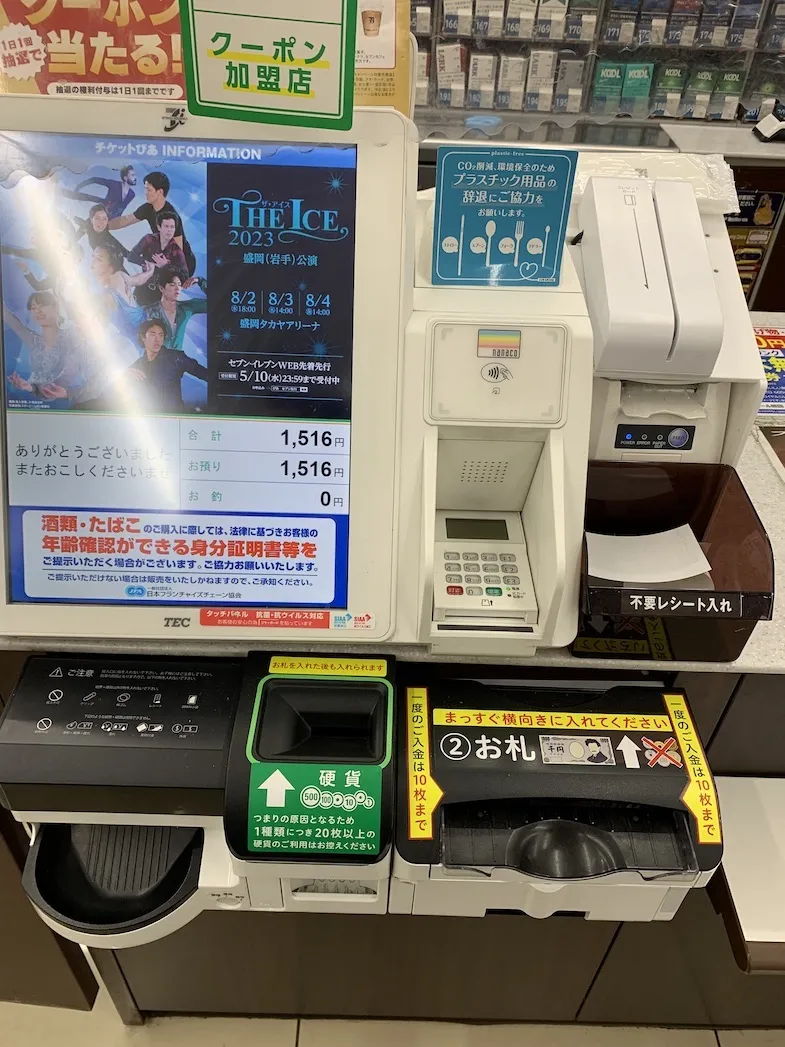
What foods are generally celiac safe?
Onigiri (rice balls) from Convenience stores were my go to. I found that most, but not all of the salmon ones were gluten-free. There was Family Mart right near my hotel which was very convenient. Below is a photo of one of the many salmon onigiri I ate. Salmon is 'sake or shaake' in Japanese.
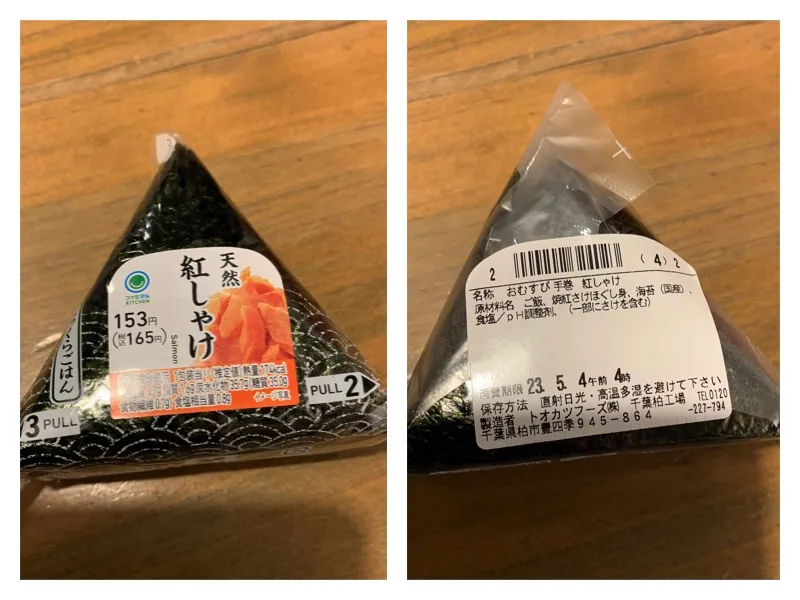
How to check the ingredients for gluten if I can't read Japanese?
Most products are not labelled gluten-free, so you will need to read the ingredient labels. Google Translate comes in very handy. I used it all the time and highly recommend downloading the app to your phone. Of course you will need access to the internet, I bought a SIM card at the airport. You may notice that it says 'omusubi' in English, that is another name for onigiri. Basically, onigiri, musubi, o-musubi, or nigirimeshi all refer to the same thing - Japanese rice balls. I would say that onigiri is used most of the time.Full disclaimer, I also had my Japanese speaking husband with me sometimes which helped a lot.
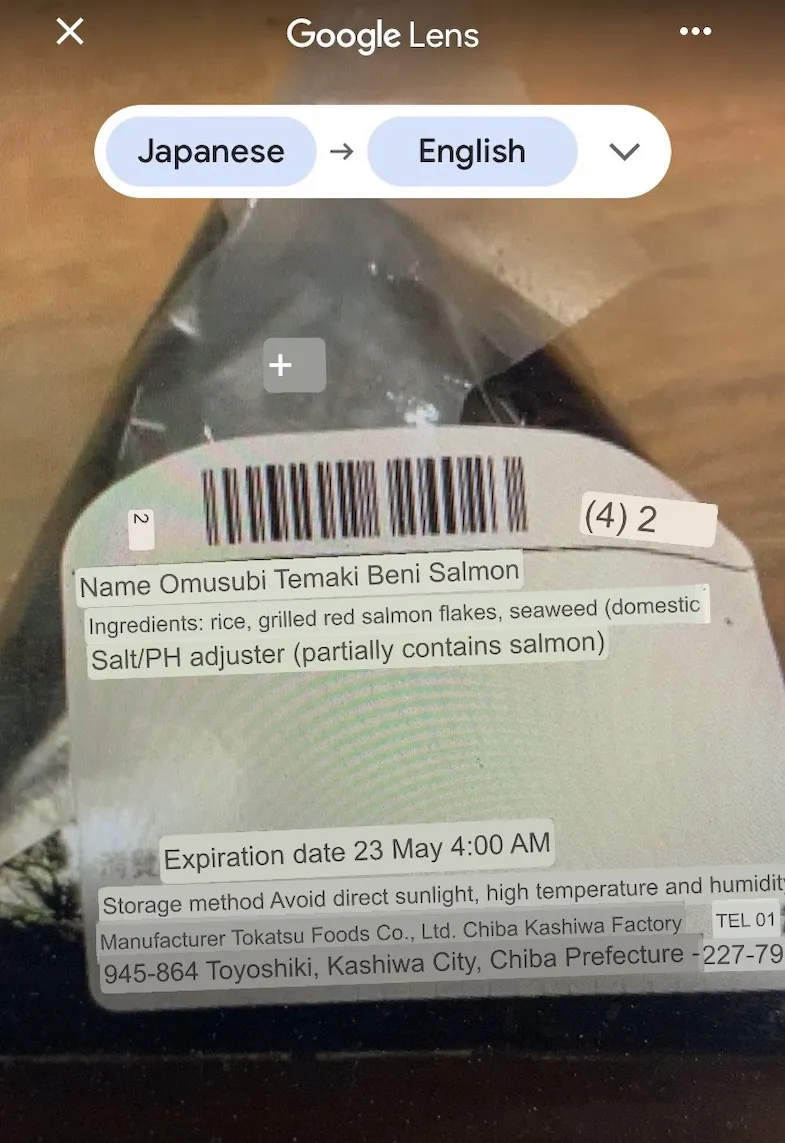
Gluten free meals from Japanese convenience store
I bought a boiled egg almost everyday. The boiled eggs at Japanese convenience stores are very tasty. I don't know how they do it, but they are perfectly salted with the peel on! Just peel and enjoy. Add a salad (don't use the dressing provided as it often has soya sauce with wheat in it), and a fruit and you have a great meal.
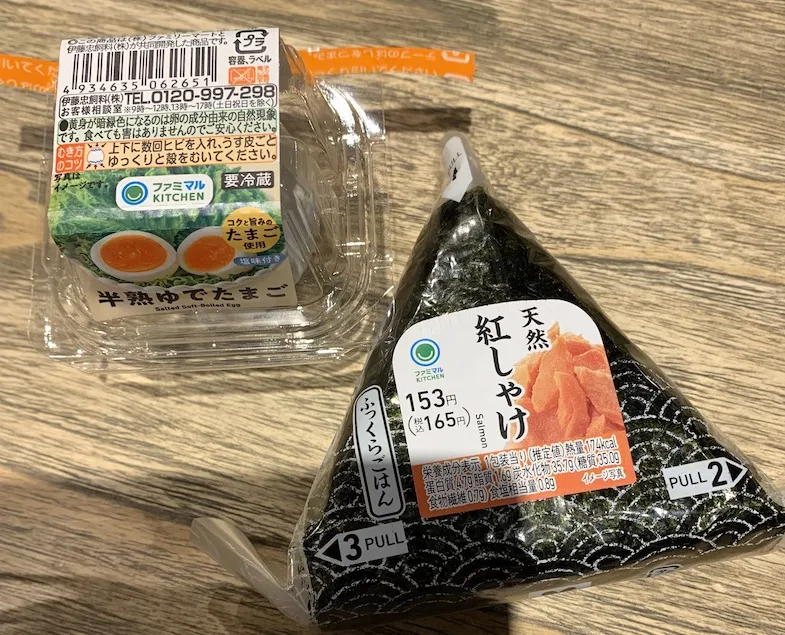
Below is a photo of an omurice onigiri I bought at 7/11. The ingredients looked ok to me. I love omurice which in pronounced o-muraisu in Japanese. The word combines omelette and rice together. It is a ketchup-flavoured chicken fried rice with a thin layer of egg. I really liked this onigiri. The drink is an orange squash which I had quite often.
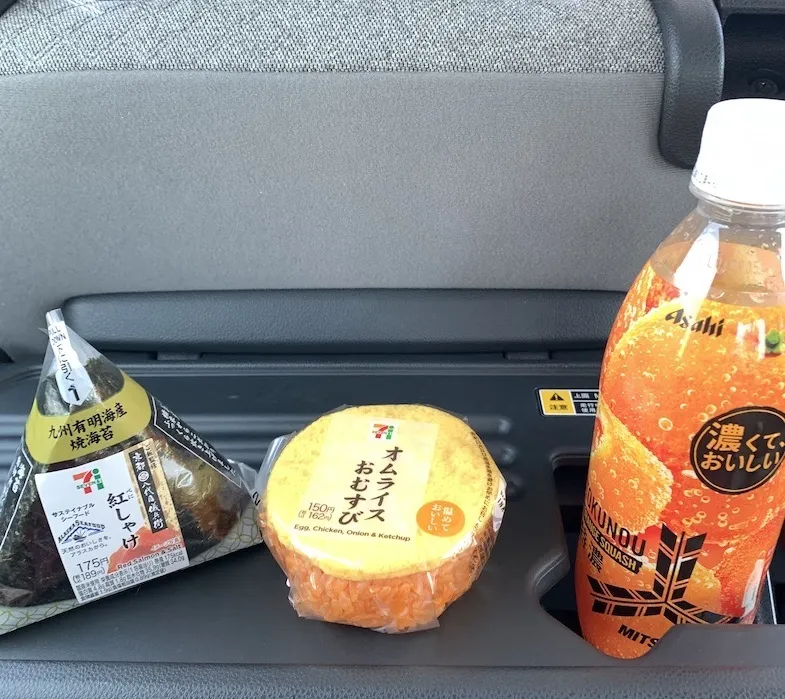
I bought and ate many types of onigiri. You do need to check the ingredients, but a lot are safe for celiacs to eat. Below are some I bought at the Kinokuniya Speciality Store in Tokyo Station. This store is not technically a 'convenience store'. Kinokuniya Supermarkets are a chain of upmarket food stores. They sell Japanese and international items and are more expensive than 7/11 or Family Mart. There is a larger store in Omotesando in Tokyo. Don't confuse the name with the large bookstore chain also called Kinokuniya if looking the stores up in Google maps. The onigiri I bought here were of course salmon and I found an ume one I could eat. I love umeboshi which is pickled plum so this made a nice change. Also, you can see I found an imported Busseto certified gluten-free salami cup. I enjoyed eating these items on the Shinkensen (Bullet Train).
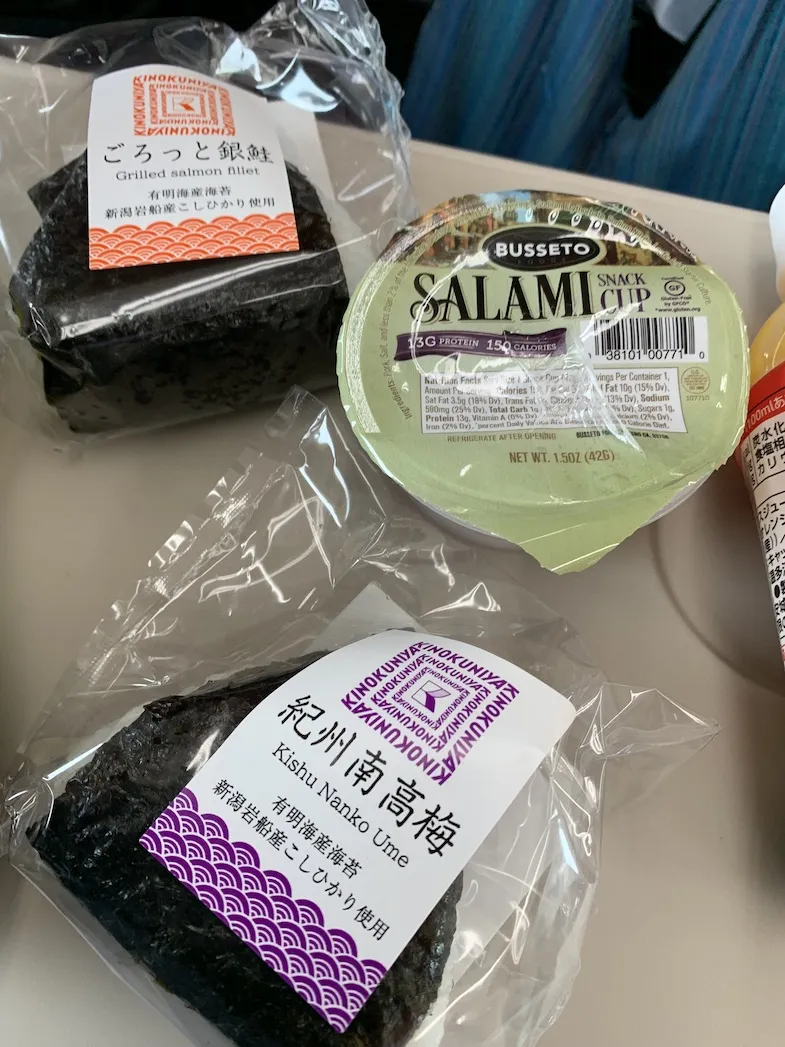
Here are some of the meals I put together using products bought at convenience and grocery stores. My usual go to were onigiri, boiled eggs, shredded cabbage, salad, some other protein for example salt chicken or fish or a can of tuna and fruit. I would add treats like some pototo chips and an occasional pop.
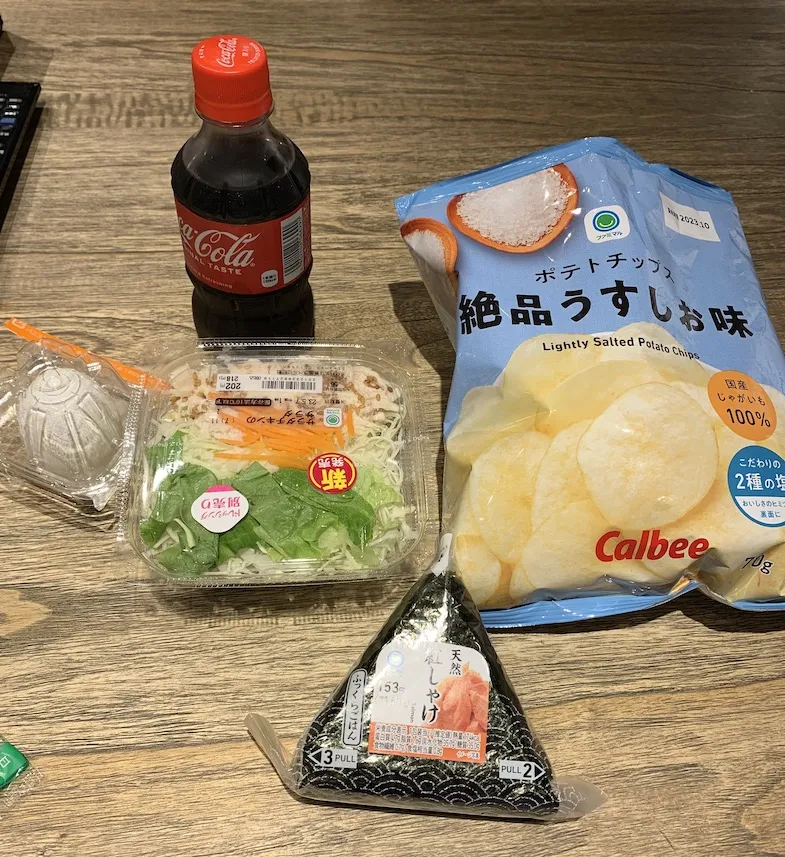
Fruit can be expensive in Japan if you buy the fruit that is for gifts, but at a convenience store or regular supermarket it is affordable. I liked buying fruit such as packaged pineapple or peaches or apples as it was perfect to carry in my bag for lunch or a quick snack. Most green teas in Japan are fine for a celiac. You do have to be careful not to drink mugicha which is a green tea made with roasted barley. It has a brown colour to it. But, not all brown tinted teas are off-limits to celiacs, there is a tea called genmaicha which is green tea with roasted brown rice which is ok for celiacs and very tasty. 'Cha' in Japanese is a generic word for tea, so 'kocha' is black tea, like English Breakfast. 'Ko' is black and 'cha' is tea. I think that sencha is the most common Japanese green tea, but there are many types of tea to enjoy in Japan.
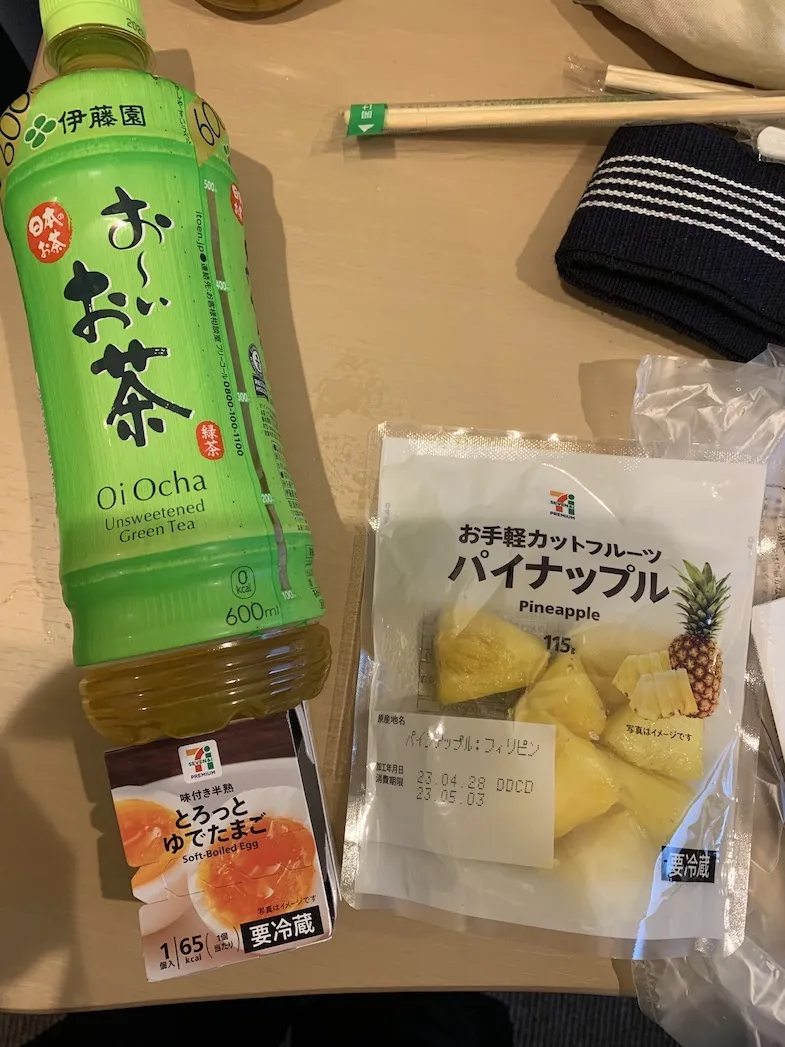
Below are some of the meals I made using food products I bought at different Japanese convenience stores and supermarkets. It was easy to do and they were very tasty. I only had a shared kitchen for part of my trip, but if you have a kitchen to yourself, you will have no problem at all making save food to eat. On my next trip we will have our own kitchen! But, I don't use all the pots and pans that are provided if I can't clean them well, because I worry about cross-contamination. Therefore, I will buy a frying pan and a colander and cutting board from Daiso or another cheap 100 yen shop. Regular pots for boiling things are usually fine.
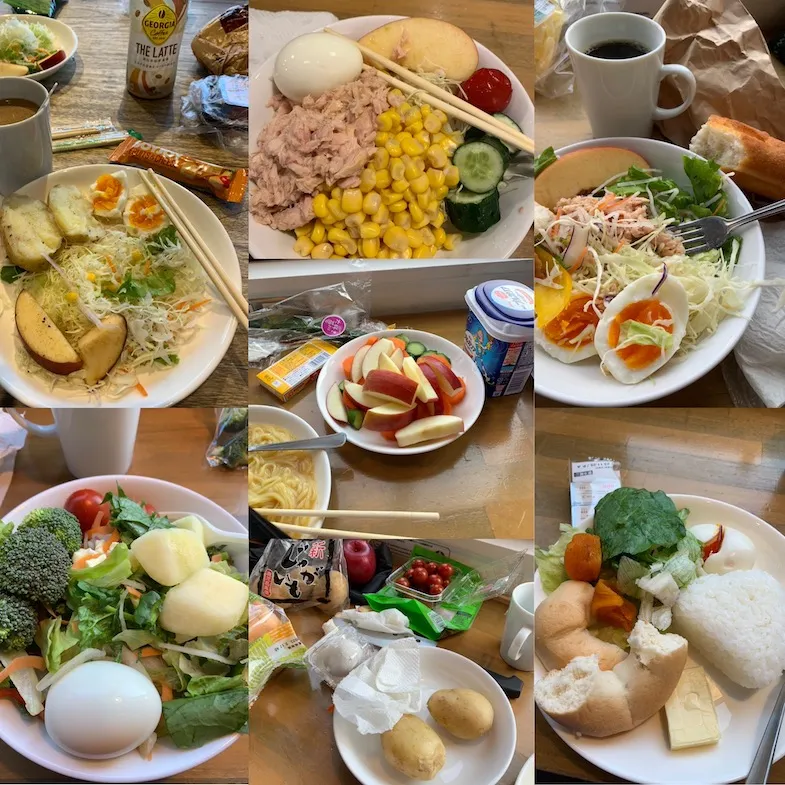
This very yummy pudding has no gluten in the ingredients. I think I got it at a Seven Eleven or Family Mart when we were out for a drive. If you rent a car to sightsee in Japan I recommend going to convenience stores along the way. If you buy something you can use their restrooms which are spotless, also you can dispose of garbage and they usually have a place to sit and eat.
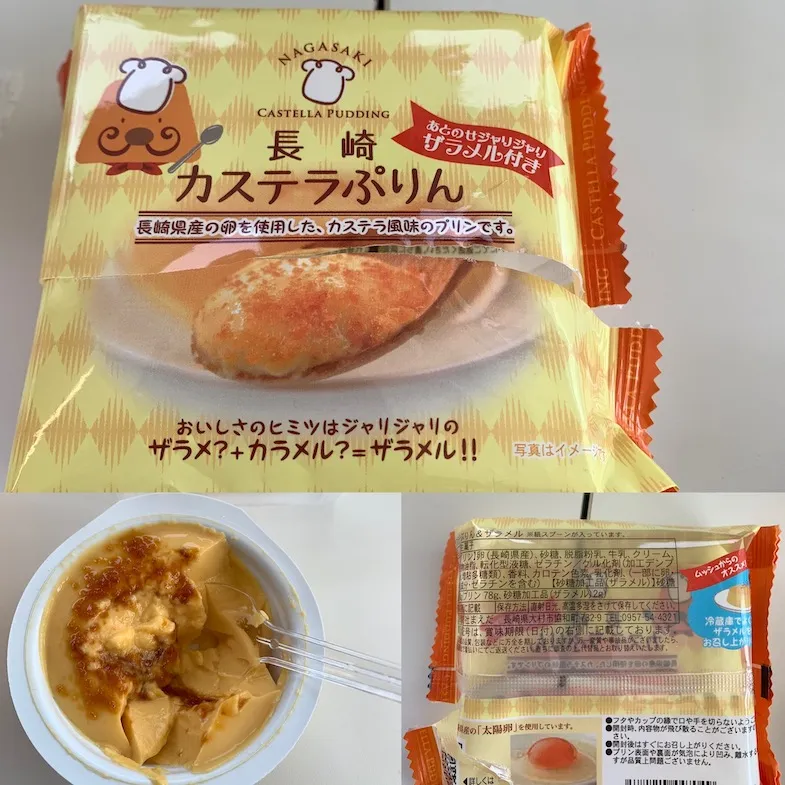
I always buy a few SoyJoy bars when I first get to Japan. Especially if I'm staying in Tokyo. I buy them to have as a gluten-free back up in my bag, and because I like their taste. I really like the sweet potato and fruit and cheese flavours, but they all are good. Another reason is to have them as my emergency gluten-free food supply in case of an earthquake. It might seem weird, but it is good to have some water and gluten-free food in an emergency bag along with your important papers to grab incase there is an earthquake and you need to evacuate.
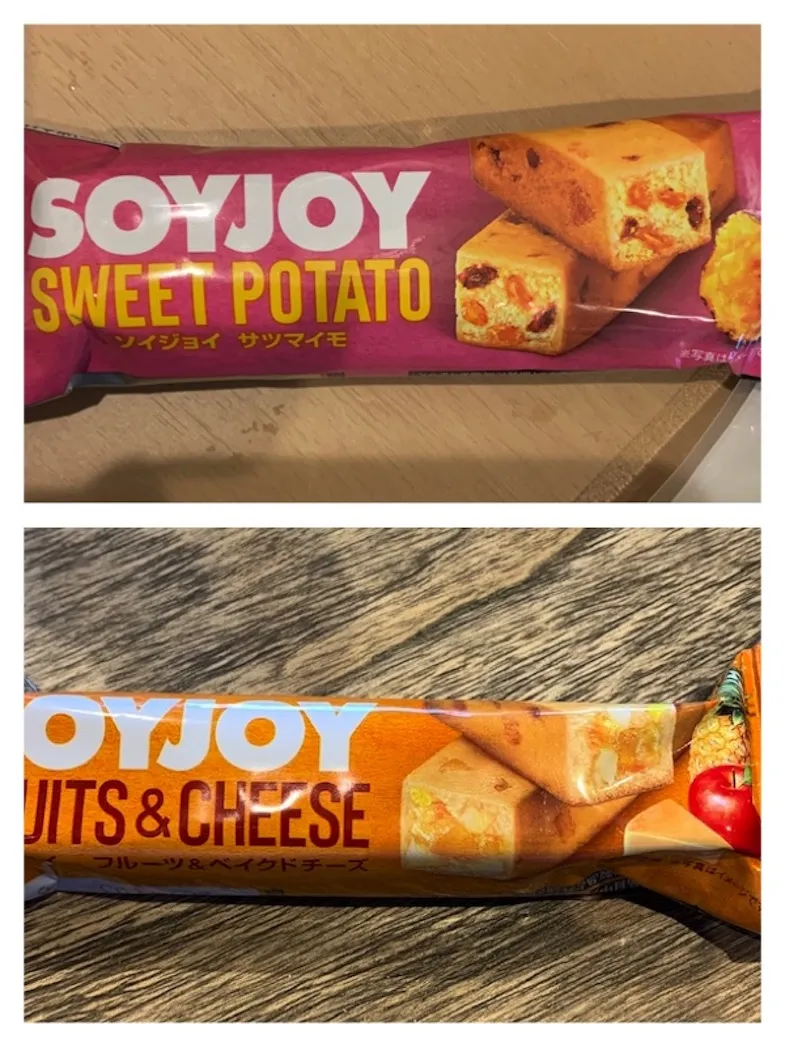
These gluten-free chocolate covered banana slices were a new find for me. Very nice frozen treat.
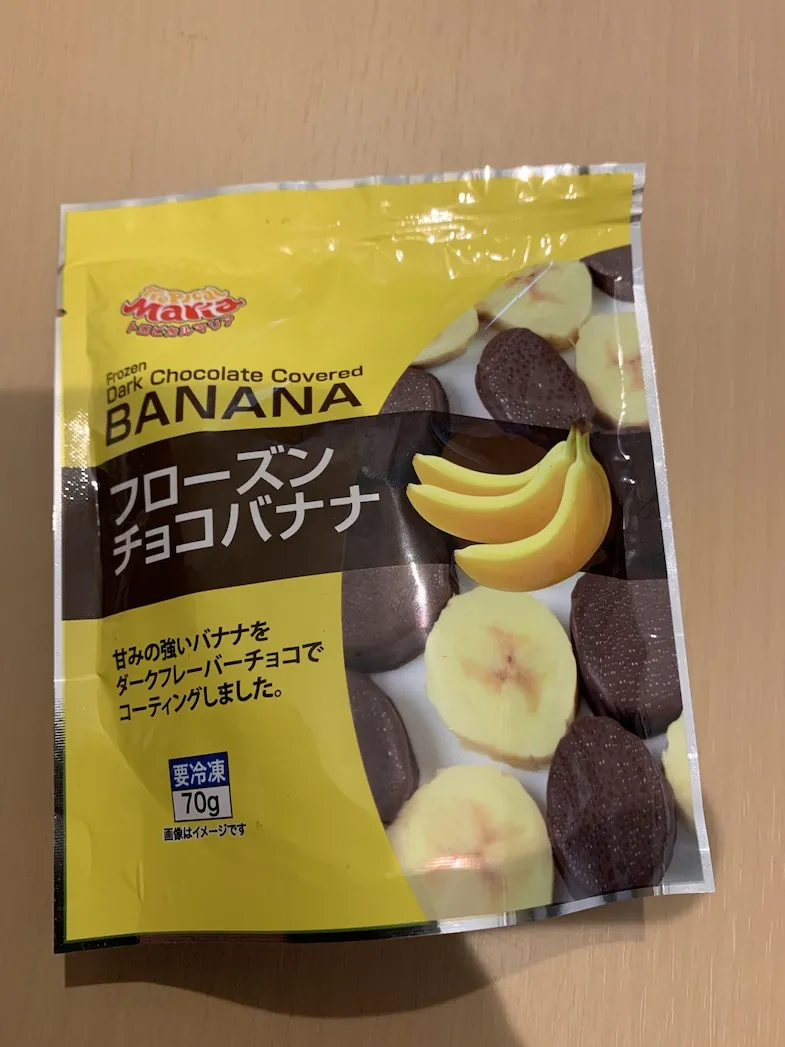
I found these frozen oranges at a Newsday kiosk on a train station platform. It was a very hot day and they were a welcome treat. Naturally gluten-free. I felt so healthy! ^-^
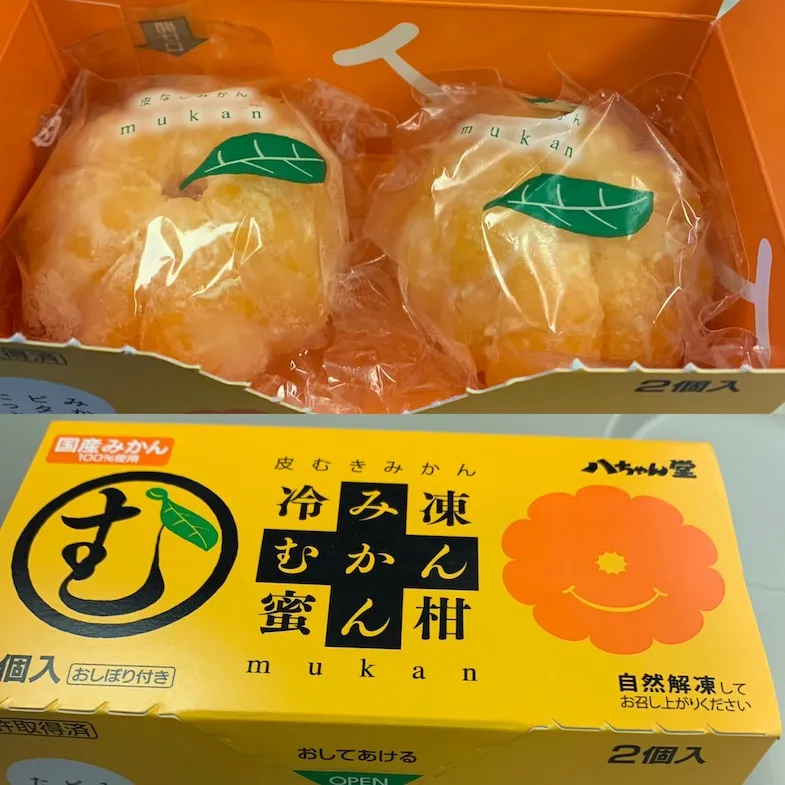
Gluten free meals from Japanese grocery store
In Tokyo I often went to the Seijo Supermarket. There are three near Tokyo Station. I went to the Seijo Ishii Shin Marunouchi Building one. They have Happy Bakery bread which is gluten-free. They quite a large selection of gluten-free buns and breads. I like the taste and the price was reasonable. They also had a selection of different gluten-free pastas.
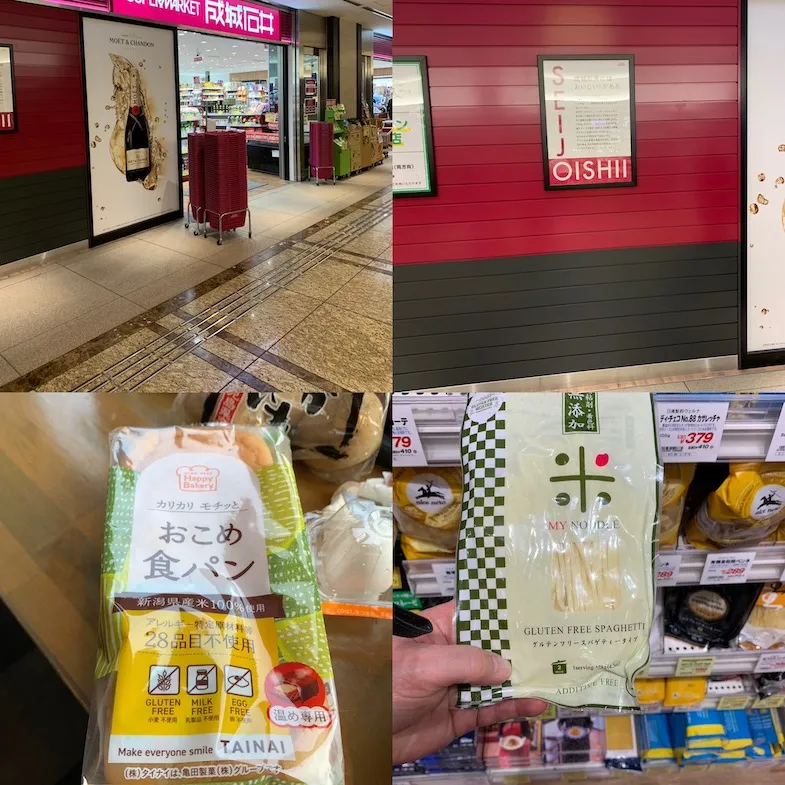
If you are in Shinjuku I recommend checking out the Bio Ral Supermarket. It is an organic health food store. In the photo are just some of the gluten-free products I found. The round cakes were very yummy. There is a wide selection of gluten-free pasta, breads, cakes, and frozen foods such as gluten-free gyoza and shumai. I also found gluten-free soya sauce. It is a bit pricey, but I was so happy to see all the different foods I could buy. If I had a kitchen in Tokyo I would have spent a lot of money! They also carry alot of vegan products too. Just outside of the Bio Ral store was a small cafe called UpBeet. They had some gluten-free sweets. I didn't try them, but I heard from other celiacs that they were good. Not 100% gluten-free place.
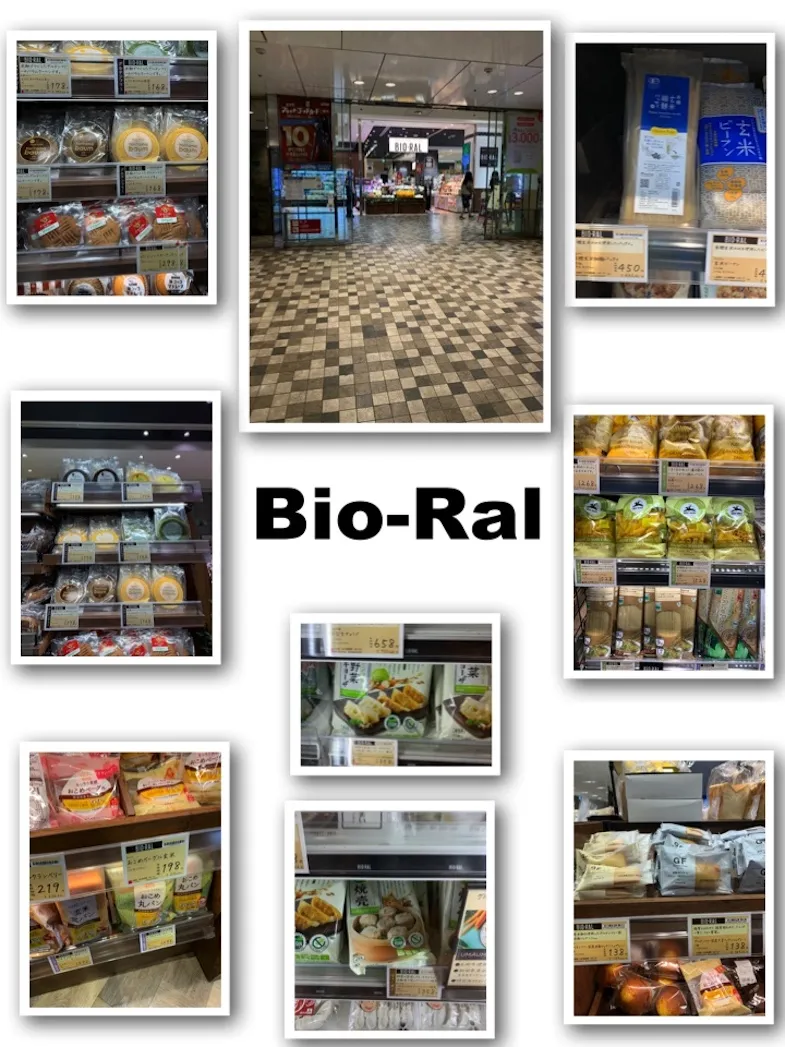
Went to the Loft in Ginza Tokyo. They had some gluten-free products. I bought all three of the Meister gluten-free ramens. Each package comes with a packet of gluten-free noodles and a soup packet. You just add them to boiling water and add veggies of your choice. They all tasted fantastic. I wish I could order them online from Canada. I went to the 2 Foods cafe, but after speaking with the staff (my husband is Japanese and explained about celiac disease and cross-contamination) I decided not to try it out. The staff said they couldn't control cross-contamination.
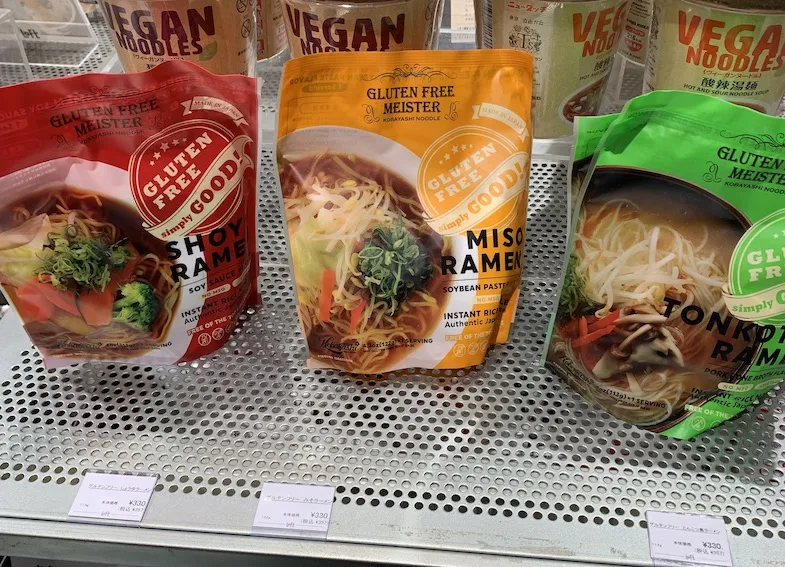
In Fukuoka, Kyushu Japan we had a car and went to a large Aeon Supermarket. The staff were so helpful. I asked if they had gluten-free bread, explaining that I had allergies to wheat and barley. Now before you all shout at me that celiac is an autoimmune disease, I know! But, in Japan the word celiac is still not well known and even gluten-free is not common. So, to make my life easier I ask stating wheat and barley allergies, because the staff understand that. Ok little rant over. A very nice lady directed me to the gluten-free bread area. These buns were very nice.
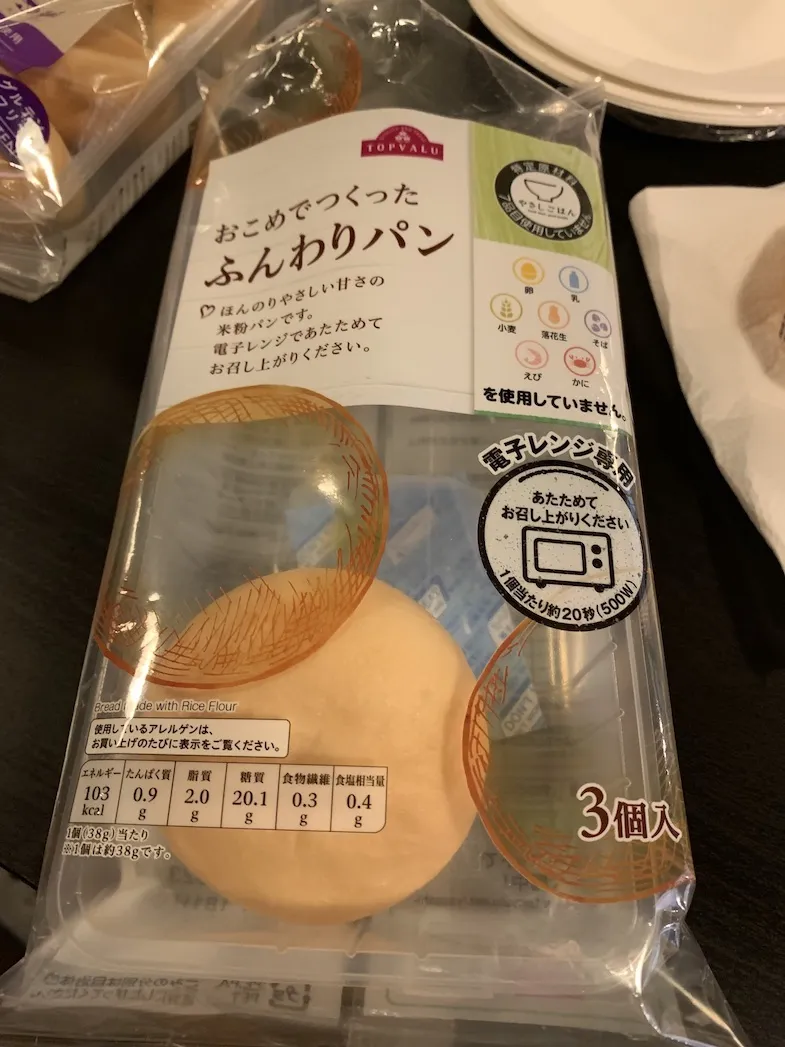
I'm sorry I can't remember the exact store I bought the above boil-in-bag curry at. It was either Bio Ral or Kinukuniya. Wheat allergies are common in young children in Japan. They seem to grow out of it as they get older. I'm not a medical person, so I don't understand how it works. But, lucky for us celiacs you can find many wheat free curries for kids. Just use Google Translate to check the other ingredients as barley is not an allergen in Japan and doesn't have to be labelled. The above Macrobiotic Curry for Kids was very tasty. I picked up some microwaveable rice from 7/11 and voila, a nice dinner.
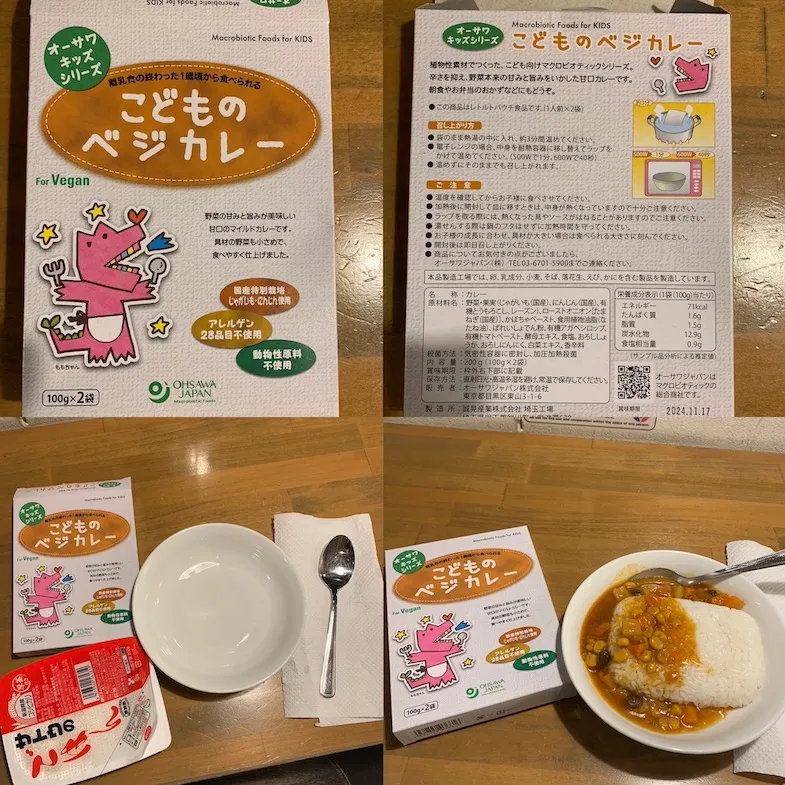
Another curry I tried was Yamumori Thai boil in bag curry. It doesn't state it is gluten-free, but the ingredients looked safe to me. I had heard other celiacs had tried it, so I decided to give it a go. Very tasty. You can find them in convenience stores and supermarkets. They have many varieties. I would buy again.

So, these are just some of the items I found that I could eat at Japanese convenience stores and supermarkets. You will not starve in Japan especially if you like onigiri and boiled eggs! Japanese grocery stores are so much fun to shop at. I had no trouble finding gluten-free bread, and gluten-free pasta. Gluten-free soya sauce was harder to find, but in large areas like Tokyo, Osaka, Fukuoka just google health food stores and you can usually find it.
Have you travelled or live in Japan? What was or are your experiences like looking for gluten-free products?
Note: These are my personal experiences and opinions. Always seek out a medical opinion for medical concerns. Not sponsored. If sponsored I will always say so at the top of the post.